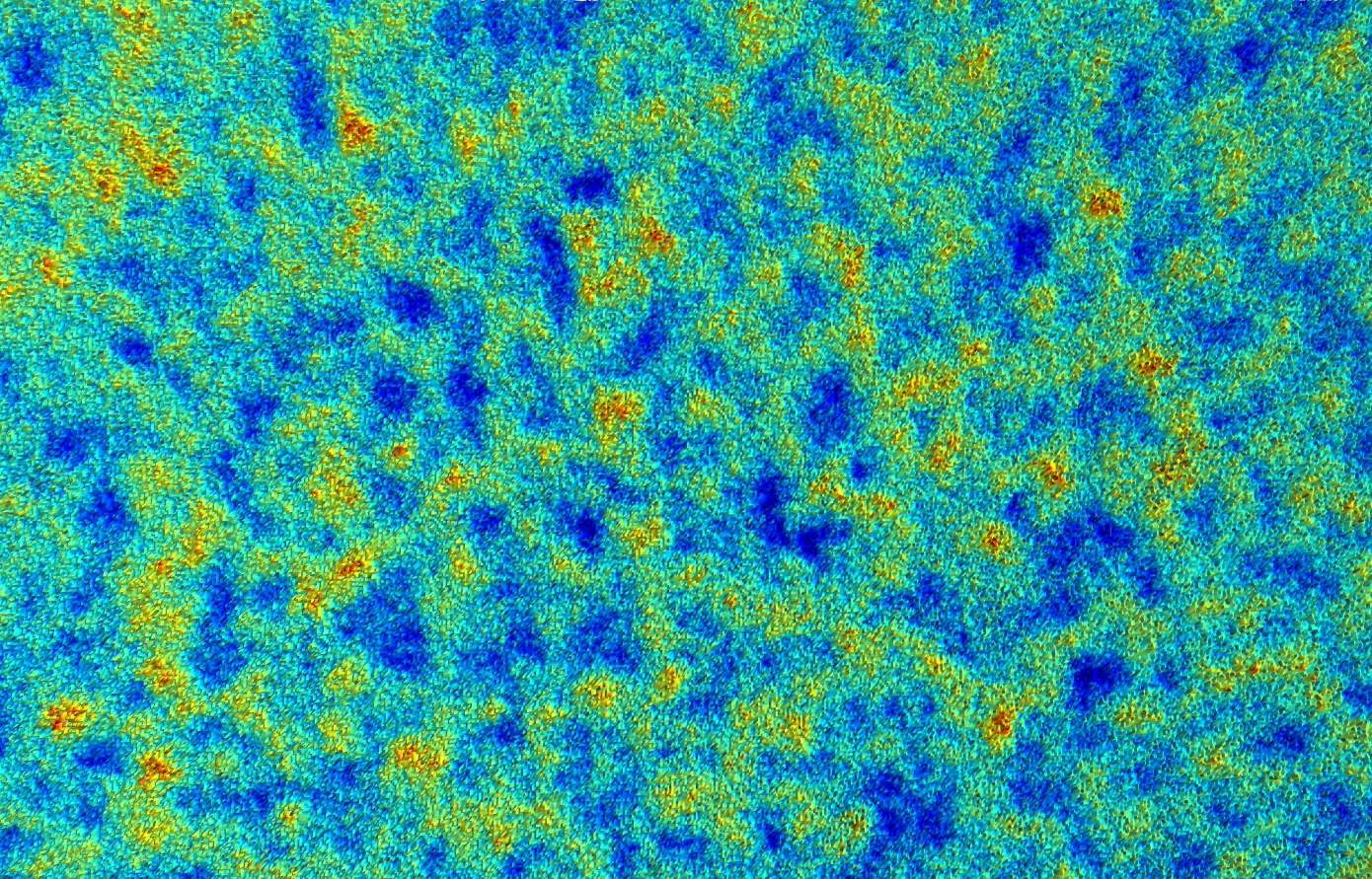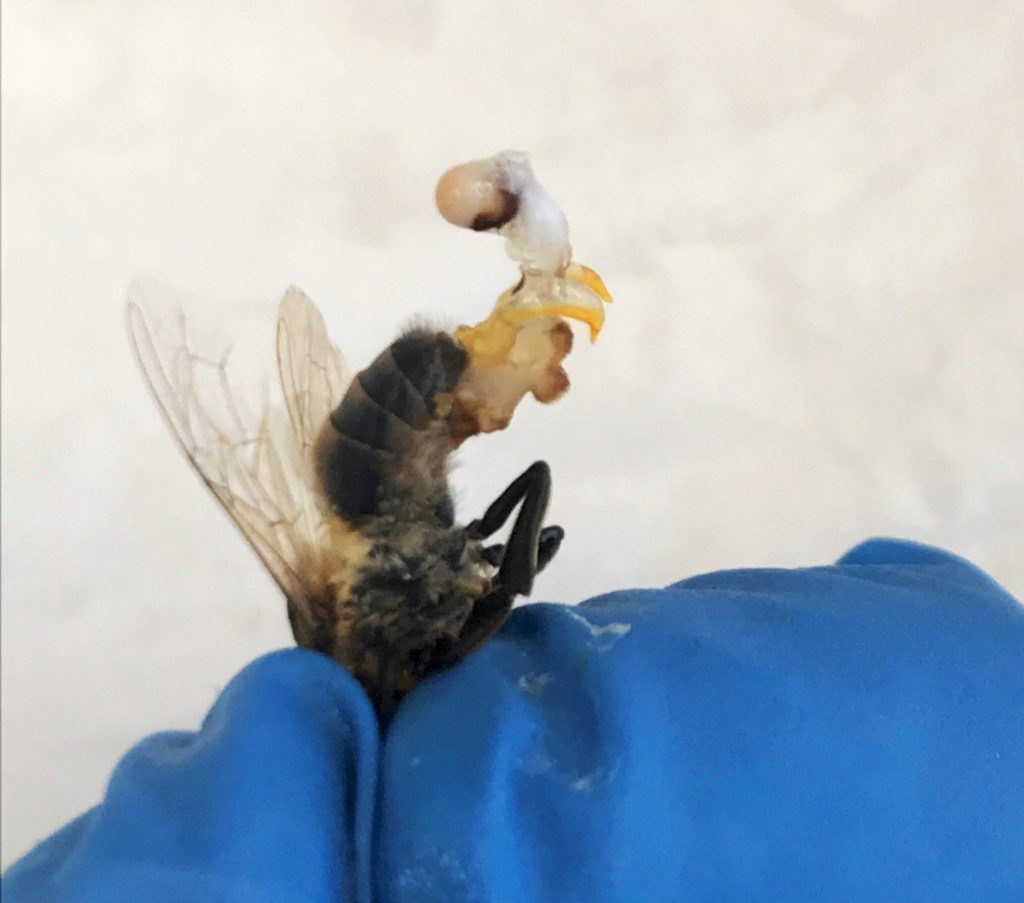科学者たちは、有機LEDにおけるオーバーハウザー場の2次元マップを世界で初めて作成し、正確な量子ベース技術を設計する上で直面する問題に光を当てました。 Scientists have created the first ever 2D map of the Overhauser field in organic LEDs, shedding light on the challenges we face in designing accurate quantum-based technologies
2022-02-14 オーストラリア連邦研究会議(ARC)
有機ELディスプレイのような有機電子材料では、1個の電子が、その上に乗っている分子を構成する多数の核スピンが作り出す磁場と相互作用する。その累積的な効果がオーバーハウザー磁場である。
これまで、デバイスのオーバーハウザー場の強さを表すには、単一の値が用いられてきた。
そのため、スピンの振る舞いに依存するデバイスをどのように再現し、小型化すればよいのかがわからなくなっていたのです。
この不確実性に対処するため、ARCのExciton Science Centre of Excellenceの研究者らは、OLEDで働くオーバーハウザー場を示す世界初の2次元マップを作成しました。
UNSWシドニーに拠点を置く研究チームは、磁気エレクトロルミネッセンスとして知られる大きな磁場を用いて、OLEDの輝度を高める微細な変化をイメージングすることで、この結果を得ました。
さらに、この変化をマイクロメートル(1mmの1000分の1、0.001mm)単位まで分解し、オーバーハウザー磁場の強さの空間分布を描き出すことに成功しました。

An bird’s-eye view of the quantum spin properties in an OLED generated by magneto-electroluminescence.
Television used to be known as ‘the idiot box’. But the organic LEDs found in modern flat screens are far from stupid.
In fact, they’re helping us to draw a map that could unlock the quantum future. No wonder they’re now called smart TVs.
The emerging concept of quantum sensing has the potential to surpass existing technology in areas ranging from electronics and magnetic field detection to microscopy, global positioning systems and seismology.
By taking advantage of quantum mechanics, new devices could be designed with unprecedented sensitivity and functionality.
But for this to happen, greater understanding is required of the role played by spin, a fundamental quantum property of subatomic particles such as electrons.
The spin of an electron can interact with other spins nearby via a process called the hyperfine interaction.
In organic electronic materials, like those used in OLED displays, a single electron will interact with the magnetic fields produced by the many nuclear spins which are part of the molecule it sits on. The cumulative effect is the Overhauser field.
Until now, a single value has been used to describe the strength of the Overhauser field in a device.
That approach is blind to local spin variations and fails to reflect its true complexity, leading to uncertainty about how to reproduce and miniaturise devices that are reliant on spin behaviour.
Seeking to address this uncertainty, researchers at the ARC Centre of Excellence in Exciton Science have created the first ever 2D map showing the Overhauser field at work in OLEDs.
The team, based at UNSW Sydney, were able to achieve this by imaging the microscopic changes in an OLED’s magnetically-enhanced brightness through the use of large magnetic fields, an effect known as magneto-electroluminescence.
They managed to resolve these variations down to the micrometer scale (one thousandth of a millimeter or 0.001 mm) and were able to map out the spatial distribution of the Overhauser field strength.
Their results showed that this critical spin property varied by at least 30% within a stable and widely used polymer OLED (SY-PPV), and by nearly 60% in a small-molecule fluorescent-based device (Alq3).
“These results show the considerable challenges that will have to be overcome in future attempts to reliably miniaturise organic-based sensing technologies for practical applications,” said Professor Dane McCamey, who leads the research team at UNSW.
The paper’s first author Billy Pappas, a PhD student at UNSW Sydney, said: “The miniaturisation of organic devices is an important milestone in being able to integrate them into functional quantum technologies, which then allows them to be effectively upscaled for industrial and commercial applications.
“But if there’s a large variation of properties within a device, which is what we observed, then the smaller you make them, the larger the impact this variation will have on your ability to reproduce a device which behaves in the same way.
“If you’ve got a 30% variation, and you make two small devices, they will look the same, but they could behave very differently. If you want to use them for sensing or logic, you’re not going to get the same results out of two otherwise identical devices because of this intrinsic variation.”
It was also shown that the Overhauser field effect is ‘spatially correlated’ (arranged in a pattern) at lengths of up to approximately seven micrometres. This opens the possibility of fabricating devices at a length scale where this spin property is highly uniform.
While that’s useful information for future attempts to make spin-consistent devices, there’s a catch – the Overhauser field is only spatially correlated for a certain period of time before changing its distribution.
“We have noticed that there’s a temporal component,” Billy said.
“So if you zoom in and sit at one particular region and repeat these measurements, you’ll see clusters, but they’re actually evolving over time, effectively modifying their spatial distributions.
“These changes occur over a minute or two, so it’s very tricky to pin them down.”
The next step for the researchers is to cool their OLEDs down to very low temperatures using a cryostat to remove thermal fluctuations, before employing a technique called optically detected magnetic resonance (ODMR) to measure even more accurate spatiotemporal fluctuations in these spin properties.
Prof. McCamey notes that “although this work highlights some of the issues that need to be addressed to produce devices repeatably, it’s also incredible that the technology used in commercial OLED displays can be used to probe these subtle quantum effects at room temperature”.
The results of this work have been published in the journal Advanced Materials and are available here.
有機EL素子における超微細スピン特性の空間的変化と相関の解明 Resolving the Spatial Variation and Correlation of Hyperfine Spin Properties in Organic Light-Emitting Diodes
William J. Pappas, Rugang Geng, Adrian Mena, Alexander J. Baldacchino, Amir Asadpoordarvish, Dane R. McCamey
First published: 17 December 2021 https://doi.org/10.1002/adma.202104186
Abstract
Devices that exploit the quantum properties of materials are widespread, with quantum information processors and quantum sensors showing significant progress. Organic materials offer interesting opportunities for quantum technologies owing to their engineerable spin properties, with spintronic operation and spin resonance magnetic-field sensing demonstrated in research grade devices, as well as proven compatibility with large-scale fabrication techniques. Yet several important challenges remain as moving toward scaling these proof-of-principle quantum devices to larger integrated logic systems or spatially smaller sensing elements, particularly those associated with the variation of quantum properties both within and between devices. Here, spatially resolved magnetoluminescence is used to provide the first 2D map of a hyperfine spin property—the Overhauser field—in traditional organic light-emitting diodes (OLEDs). Intra-device variabilities are found to exceed ≈30% while spatially correlated behavior is exhibited on lengths beyond 7 µm, similar in size to pixels in state-of-the-art active-matrix OLED arrays, which has implications for the reproducibility and integration of organic quantum devices.



